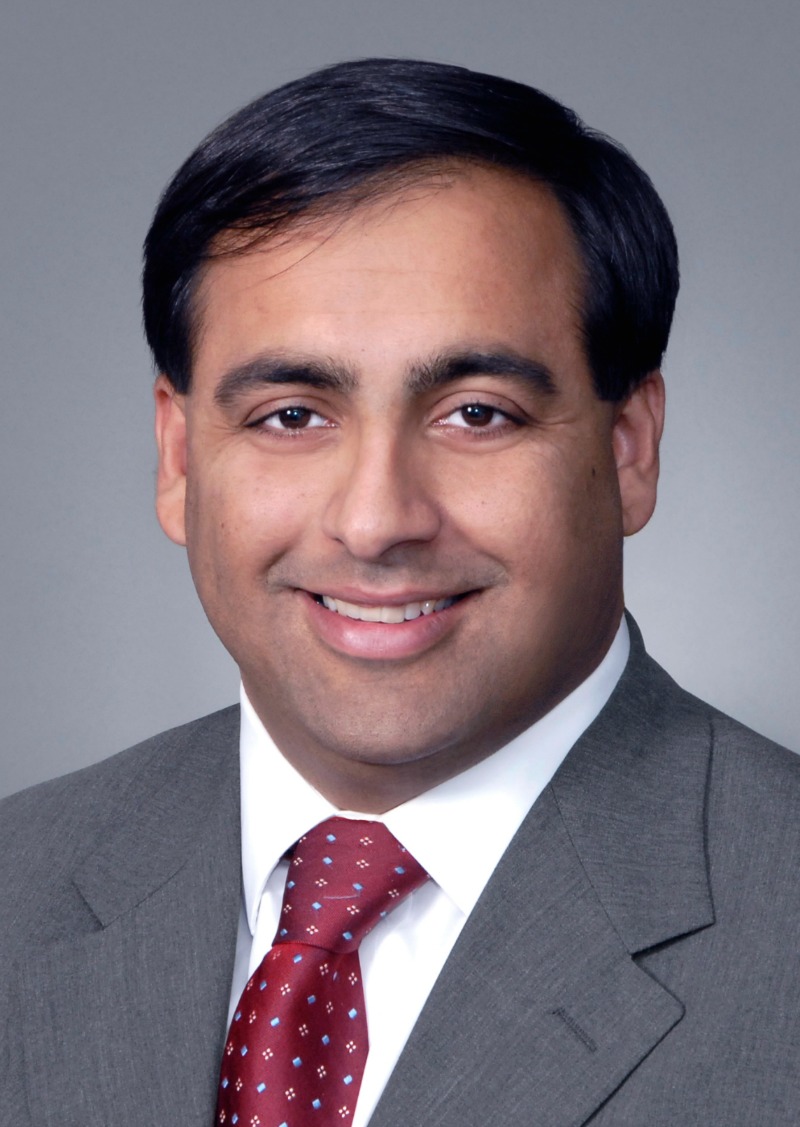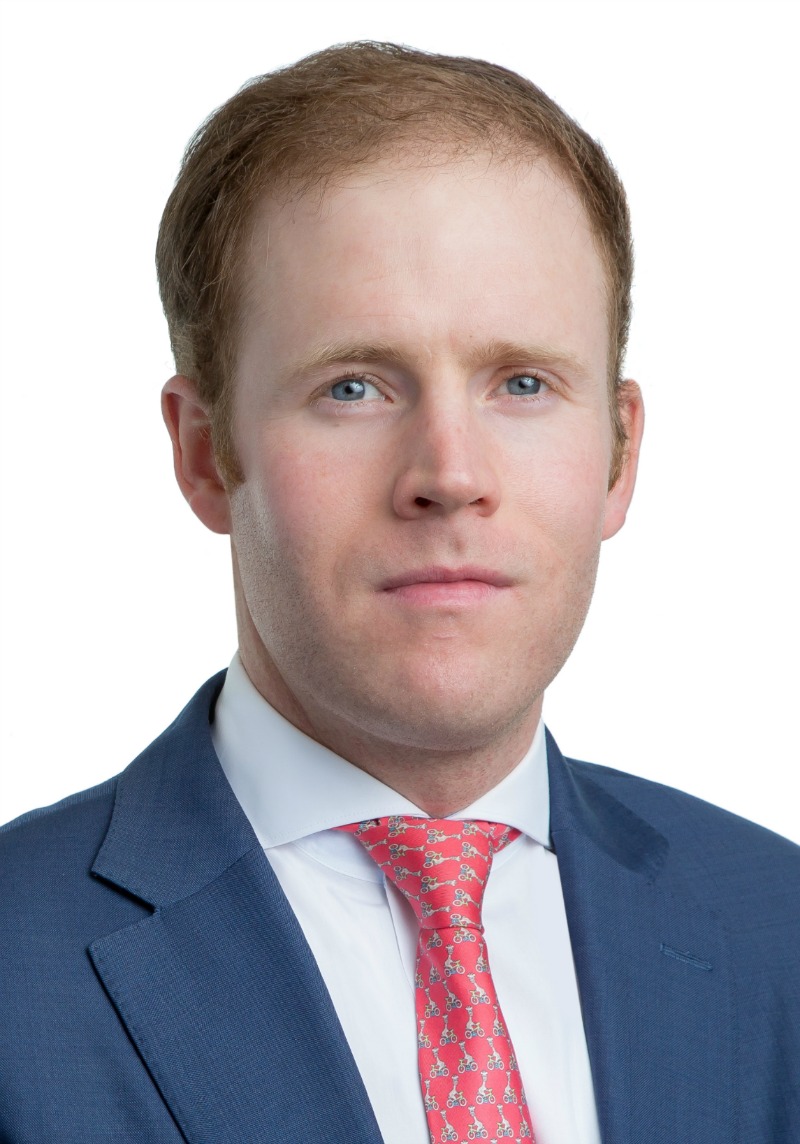
Closing the biggest midstream deal in this hemisphere catches everyone’s attention, but Dheeraj Verma, president of Quantum Energy Partners—one of the investors in Oryx, stressed that there is no silver bullet. (Source: Oryx Midstream Services LLC/Shutterstock.com)
[Editor's note: A version of this story appears in the June 2019 edition of Oil and Gas Investor. Subscribe to the magazine here.]
When Stonepeak Infrastructure Partners struck a deal to buy Oryx Midstream Services LLC on April 2, the biggest midstream deal in history was no steely-eyed showdown. Quite to the contrary, the principles told Oil and Gas Investor that building the system and discussing the sale were the collaborative efforts growing from respect and trust.

a good job over
the years of
building out the
midstream from
our upstream
knowledge base
and positions,”
said Dheeraj
Verma, president
of Quantum
Energy Partners.
f the $3.6 billion paid for Oryx is surprising, the system was hiding in plain sight all along. “We have done a good job over the years of building out the midstream from our upstream knowledge base and positions,” said Dheeraj Verma, president of Quantum Energy Partners, one of the investors in Oryx. The others were Post Oak Energy Capital and two producers, Concho Resources Inc. and WPX Energy Inc.
RELATED: Concho, WPX Divest Permian Midstream Assets In $3.6 Billion Oryx Sale
Oryx is the largest privately held midstream crude operator in the Permian Basin. It owns and operates a crude gathering and transportation system underpinned by nearly a million acres under long-term dedications from more than 20 shippers, including many of the Permian’s leading oil and gas producers.
The system’s 2.1 million barrels of storage and 1,200 miles of pipe in service and under construction span eight counties in Texas and two in New Mexico. Upon completion, Oryx’s total Delaware Basin transportation capacity will exceed 900,000 barrels per day.
Oryx II, in the northern Delaware Basin, is now in service, and volumes are ramping up, said Jack Howell, partner and head of energy at Stonepeak. “That was a key factor for us. We wanted the full system operational without construction risk. There is significant production in the region that was still on trucks waiting for this system to be completed. We are already seeing a substantial volume increase.”
The timing of the deal was very deliberate. “From the perspective of an infrastructure fund, this is what we do,” said Howell. “The system sits on top of the best rock in North America with a uniquely diversified customer base which, in our view, significantly de-risks the exposure to movements in commodity prices. The management team, led by Brett [Wiggs] and Karl [Pfluger], is excellent. Not only are they staying, they are investing alongside us.”
Oryx is already among the largest midstream operators in the Permian, and Stonepeak has said it is keen to expand much further. Howell reiterated that eagerness but was circumspect about details. “As it stands today, Oryx is a great platform. We are planning to take it to the next level.”
Post Oak is predominantly an upstream investor, explained Frost W. Cochran, founding partner and managing director. “We and Quantum were early investors in the Delaware, and we realized that there was limited infrastructure in the area. We were trucking crude. It was abundantly clear that midstream infrastructure needed to be built, but none of the legacy midstream companies were willing to do that. So we put together a top midstream team to do that.”
There are several possible reasons that the big public midstream firms demurred, Cochran said. “We were so close to the rock that we knew what we had, but the strategics were still in the show-me mode. They wanted three years of results to get proof of need. We knew we could not wait that long.”
He also acknowledged that the Midland Basin “was going gangbusters at the time. There was already infrastructure in place so the strategics could just build out at less risk. We were willing to take the risks in the Delaware that the traditional midstream companies were not willing to take.”
Cochran credits the management team at BC Operating for helping to get the idea off the ground. Both Post Oak and Quantum had interests in BC Operating, which had 51,500 acres in the northern Delaware Basin in New Mexico—Post Oak through Crown Oil Partners and Quantum through Crump Energy Partners II.
“We did a lot of work on the rock in the Delaware Basin,” said Verma. “The Midland Basin was getting all the attention, but not a lot of people had made the jump to the Delaware back then. The first big anchor tenant for Oryx in the Delaware was BC Operating. That was the starter kit.” BC Operating was acquired by Marathon Oil Corp. in 2017 for $1.1 billion, making that major independent an important anchor shipper.
The next big tenants on Oryx’s system were Jagged Peak Energy Inc., J Cleo Thompson and Patriot. The latter two were acquired by Occidental Petroleum Corp. for more than $1 billion each, while Jagged Peak, a Quantum portfolio company, was taken public for about $3 billion.
RELATED: Jagged Peak To Launch First Southern Delaware IPO
The next big steps were signing Concho and WPX as investors, not just shippers. “That was based on long-standing relationships and trust,” said Verma. “Those two partners were also crucial to the overall momentum and footprint of the business.”
It is not surprising that Stonepeak was ready to finalize growth plans even as it was closing the Oryx deal. “We’ve been familiar with Oryx for some time,” said Howell. “We have long had the view that the Permian would be the key driver of U.S. hydrocarbon production growth, and the way we play that is through the midstream. We have long been an investor in Plains, and we have multiple downstream JVs [joint ventures] with Targa.”
A year ago those ventures bought Targa’s 25% interest in the Gulf Coast Express Pipeline, a 20% interest in the Grand Prix Pipeline and all of Targa’s next fractionation train at Mont Belvieu, Texas, that will be filled with liquids primarily from the Permian.
Closing the biggest midstream deal in this hemisphere catches everyone’s attention, but Verma stressed that there is no silver bullet. “It was broad-based collaboration among two private-equity firms, two Midland families, two big public producers and multiple upstream portfolio teams. It was building a great business the old-fashioned way, by ultimately delivering a superior value proposition to the customers.”
He noted, in particular, the Oryx leadership team of Wiggs and Pfluger was instrumental in the success of the business. “They were able to convince customers of their ability to deliver a superior outcome and were able to win everyone’s trust and collaboration. They were also able to attract and motivate a strong team of professionals like Josh Ham, general counsel; Martin McHale, COO; and Mike Rose, executive vice president for engineering and construction.”
It is important to note that Oryx was hardly built in a vacuum. “The major pipeline companies were there all along,” said Verma. “Incumbents like Plains All American [Pipeline] are still the biggest in the basin. They won their fair share of business, and so did we. The basin grew so dramatically and so fast that there was enough for everyone to say grace over. I have to say again we competed well on price and service.”
The differentiator for Quantum would seem to be size, but Verma explained that is a function of patience and operational expertise. “There are at least five other private-equity firms that built great midstream businesses across the Permian Basin. Many of them were sold early as they were still building out and growing. As in any business, it is easier to build a $200 million business, hard to grow it to a $1 billion level and even harder to grow it into a $3-plus billion business.”
Recent examples of some Quantum companies that have been in the limelight include: Jagged Peak’s $3 billion IPO, Vantage Energy being sold to Rice Energy Inc. for $2.7 billion and Vitruvian being sold to Gulfport for $1.85 billion.

sits on top of
the best rock in
North America
with a uniquely
diversified
customer base
which, in our view,
significantly derisks the exposure
to movements in
commodity prices,”
said Jack Howell,
partner and head
of energy at
Stonepeak.
Verma is adamant that just as patience and perseverance is the key to the size and scale of their businesses, fair dealing and collaboration with others is essential to their success. He gives great credit to Concho and WPX for putting their money where their molecules were, and stresses that their faith in Oryx was paid back with interest. All the investors in Oryx did well by openly and actively collaborating with each other.
“Oryx was built as a strong collaboration between half a dozen key constituents,” Verma added. “We were passionate about treating everyone equally and ensuring alignment from beginning to end. Every investor got their pro-rata share of the successful outcome.”
Oryx Midstream grew faster and larger than any of the investors imagined. “It started simply as a tactical response to a physical need,” Cochran related, “and grew quickly into an entrepreneurial opportunity. As soon as we started siting rights-of-way, other producers saw that we were solving a problem.” Concho Resources became not just a major shipper but an investor in Oryx I in the southern Delaware. WPX did the same in the northern Delaware.
It might seem odd for shippers to take equity positions in a private-equity-backed midstream venture, especially publicly traded producers. “Concho and WPX are very entrepreneurial firms,” said Cochran. “They are very good at recognizing opportunities, especially ones with a technical edge.”
The Post Oak M.O. is to build assets from the ground up and sell. “Once we had crude and cash flowing through Oryx I, we had done our job,” said Cochran. “We hired Jeffries to market the business. But by then we committed to Oryx II. Stonepeak was among those interested. They and everyone else wanted Oryx II as part of the deal. We were not prepared to sell for an under-construction discount, so we stopped the process until II was operational.”
Stonepeak alone among the initial shoppers took note of the first-quarter 2019 completion date for Oryx II and made a pre-emptive offer. “It was a relatively short conversation as Stonepeak was already familiar with the assets and the team. We had an agreement in a few weeks.”
“There were a few midstream strategics hanging around the hoop as well,” Cochran added. “But Oryx had gotten so big that they did not have the capacity to pay cash. And none of the owners wanted to manage an illiquid position after the sale.”
Recommended Reading
Private Equity Looks for Minerals Exit
2024-07-26 - Private equity firms have become adroit at finding the best mineral and royalties acreage; the trick is to get public markets to pay more attention.
How Liberty Rolls: Making Electricity, Using NatGas to Fuel the Oilfield
2024-08-22 - Liberty Energy CEO Chris Wright said the company is investing in keeping its frac fleet steady as most competitors weather a downturn in oil and gas activity.
Permian Resources Closes $820MM Bolt-on of Oxy’s Delaware Assets
2024-09-17 - The Permian Resources acquisition includes about 29,500 net acres, 9,900 net royalty acres and average production of 15,000 boe/d from Occidental Petroleum’s assets in Reeves County, Texas.
VAALCO Reports Increased Reserves After Svenska Deal
2024-07-16 - VAALCO acquired Swedish E&P Svenska’s 27.39% non-operated working interest in the deepwater Baobab Field in Block CI-40, offshore Côte d’Ivoire.
Crackin’ It at Kraken: Inside the Bakken’s Ramped-up Private E&P
2024-07-24 - Kayne Anderson-backed Kraken Resources is producing more than 80,000 boe/d today and has a new Fitch Ratings credit score to take to the M&A bank.
Comments
Add new comment
This conversation is moderated according to Hart Energy community rules. Please read the rules before joining the discussion. If you’re experiencing any technical problems, please contact our customer care team.






